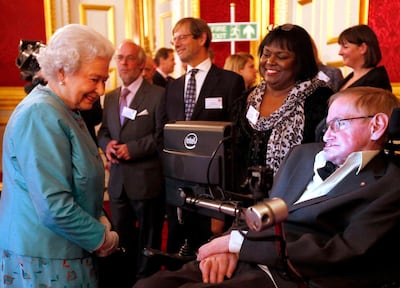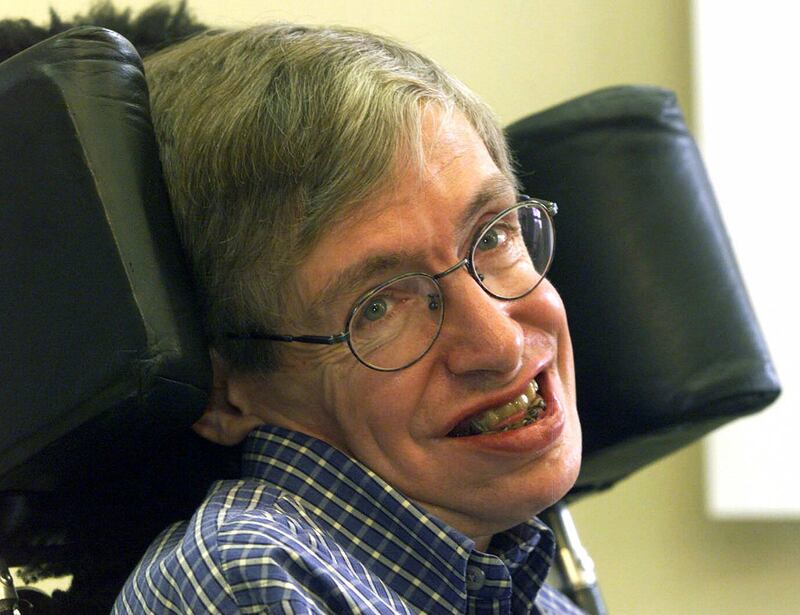No scientist since Albert Einstein has achieved such celebrity as Professor Stephen Hawking. Renowned for tackling the deepest of cosmic mysteries despite profound physical challenges, he was the apotheosis of the ability of the human mind to transcend all bounds.
While in reality his scientific status falls well below his media image as the heir to Einstein, Hawking’s achievements remain mind-boggling.
As a young graduate student in the 1960s, he showed that Einstein’s theory of gravity broke down completely at the birth of the universe. He then went on to discover hidden links between gravity, quantum theory – the rules of the sub-atomic world – and thermodynamics, originally devised to understand steam engines.
In the process, Hawking showed that black holes - bizarre objects whose intense gravity was supposed to trap everything within them - can actually emit heat.
He went on to work on a challenge that had defeated even Einstein: the search for a 'Theory of Everything', describing all the particles and forces that make up the universe.
In this, he was unsuccessful.
Yet Hawking’s ability to make world-class contributions to this ultimate challenge highlights the quality in which he rivalled Einstein himself: defiance.
Born into an intellectual family in Oxford, England, on 8 January 1942, Hawking went up to Oxford University in 1959 to read physics – against the wishes of his father, who wanted him to study medicine.
Finding the curriculum boringly easy, he did so little work he had to undergo a special oral examination to decide the class of his degree. He told his examiners that if they awarded him a first, he would go to Cambridge University, otherwise he would stay at Oxford. Recognising his brilliance, they duly gave him a first.
On arriving at Cambridge, Hawking began a PhD on cosmology – only to be diagnosed with motor neurone disease and told he had two years to live. Characteristically, after a brief bout of depression, Hawking set to work on a brilliant PhD exposing the limits of Einstein's theory of gravity, and married his first wife, Jane.
_____________
Read more
Eminent physicist Stephen Hawking dies aged 76
Dr Jane Hawking: Her own theory on it all
Stephen Hawking and his five-decade fight with motor neurone disease
_____________
By that time he had acquired a reputation for challenging authority. Attending a lecture by the great Cambridge astrophysicist Fred Hoyle on a new theory of the universe, Hawking interrupted by declaring “You’re wrong!”. Demanding to know why, the notoriously irascible Hoyle found himself being told by the 22-year old grad student: “I’ve worked it out”.
Hawking most famous demonstration of scientific iconoclasm began one evening in November 1970.
By that time, MND was seriously affecting his life: his voice was slurred, and he needed a special frame to move about. "I started to think about black holes as I was getting into bed", he later recalled.
"My disability makes this rather a slow process, so I had plenty of time".
He imagined what would happen if one black hole swallowed another. Hawking realised that the surface area of the combination would always be at least as big as the areas of the two individual black holes. This led him to connect black holes with another property that never decreases: entropy – a concept at the heart of thermodynamics, the science of heat.
By 1974, Hawking had linked this insight with quantum theory to arrive at an astonishing conclusion: that black holes emit radiation, and eventually explode.
His arguments were instantly attacked by fellow theorists. Hawking held his ground, and the howls of derision were quickly replaced by approbation. He was elected a Fellow of the Royal Society, the world’s most prestigious scientific academy, at the age of just 32.
By the late 1970s, Hawking had been elected to the Lucasian Chair of Mathematics at Cambridge University, the same professorship held by Sir Isaac Newton.
It marked a turning point in Hawking’s career, in which he focused on ever more speculative ideas.
At the time, theorists were excited by apparent clues that they were closing in on the elusive Theory of Everything. Incredibly complex calculations pointed to hidden links between Einstein’s General Relativity and quantum theory.

These links came with a bizarre implication, however: that there are many more dimensions to space than we can observe.
Hawking described these developments in his inaugural lecture as Lucasian professor, under the characteristically provocative title “Is the end in sight for theoretical physics ?”. He argued that the Theory of Everything might be pinned down by the year 2000.
Yet it soon emerged that Hawking’s favoured candidate – something called N = 8 Supergravity – had profound problems. By the mid-1980s, it had been replaced by another candidate for the Theory of Everything, called string theory. This, too, later fell by the wayside.
In the years that followed, Hawking worked on increasingly recondite ideas about black holes and the origin of the universe. While his ideas opened up vast new seams of work for his peers, they have led to no demonstrable insights into reality. Not one of his theories has been confirmed by observation; several have been debunked.
This disconnect between Hawking’s image and his reputation among fellow scientists was highlighted by Britain's Institute of Physics in 1999. Asked to vote for the Greatest Physicist of All Time, 250 of the world's leading physicists put Einstein first by 119 votes, followed by Newton with 96. Hawking garnered just two votes.
By then, however, Hawking was unquestionably the World's Most Famous Living Physicist, following the spectacular success of his book A Brief History of Time. Published in 1988, this tour d'horizon of fundamental physics became an instant best-seller and has sold around 25 million copies world-wide. Despite famously containing just one equation – Einstein's famous E = Mc^2 [[squared]] - it also has a reputation for being the most unread best-seller of all time.
The passing of Stephen Hawking may well see a spike in its sales. Today it offers an outdated vision of how the universe works, which is even less clear now than when A Brief History first appeared.
But it still gives a sense of the puckish wit and unquestionable brilliance of a truly remarkable human being.






